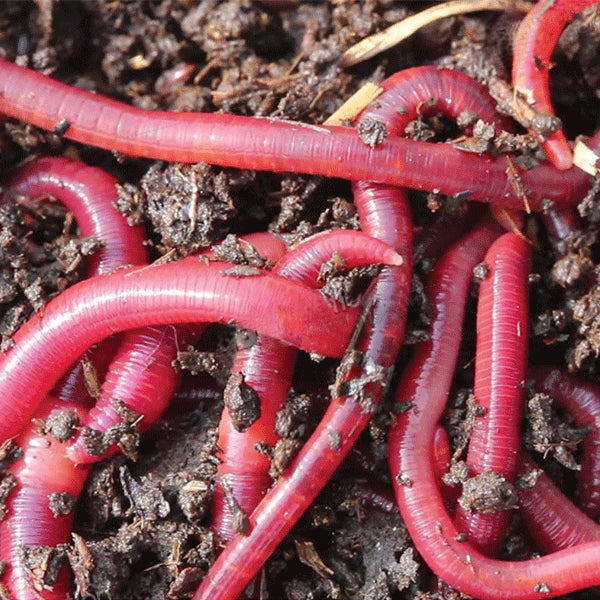Active red worms: Make composting easy
Wiki Article
Why Red Wigglers Are the Ideal Option for Your Composting Requirements
Red wigglers have actually emerged as an exceptional choice for composting due to their amazing capability to efficiently decay natural matter while creating high-grade worm castings. The journey to successful vermicomposting includes more than simply acquiring these worms, and comprehending the ideal conditions and false impressions bordering them is critical for optimizing their capacity.Advantages of Red Wigglers

Red wigglers thrive in a selection of conditions, making them adaptable to various composting setups, from little bins to bigger systems. They master vermicomposting, where their activity develops a high-grade final result referred to as worm spreadings, rich in beneficial bacteria and nutrients essential for plant development. This natural plant food promotes soil health, enhances wetness retention, and boosts plant durability versus insects and conditions.
Additionally, employing red wigglers can considerably reduce methane emissions linked with garbage dump waste, adding to environmental sustainability. Their ease of care and marginal maintenance needs make them appropriate for both newbie and seasoned composters. Ultimately, integrating red wigglers into your composting approach not only promotes reliable waste management however additionally raises the high quality of your compost.
Ideal Composting Problems
Developing optimal composting problems is necessary for making best use of the effectiveness of red wigglers in damaging down natural matter. These worms prosper in a controlled environment that imitates their natural habitat, which mainly includes moist, dark, and well-aerated areas. To achieve this, keeping a temperature series of 55 ° F to 77 ° F is essential, as severe temperatures can prevent their activity or even bring about death.(red wiggler worms for sale near me)Moisture degrees need to likewise be thoroughly checked; red wigglers require a wet setting, ideally around 70% moisture content. Excessive wetness can cause anaerobic conditions, while not enough moisture can create dehydration. Furthermore, a balanced carbon-to-nitrogen ratio, preferably around 25:1 to 30:1, sustains optimum digestion and nutrient biking.
Furthermore, the composting tool must be kept loose and aerated, enabling for appropriate air movement. This not only profits the worms yet likewise aids in the breakdown of organic materials. By ensuring these excellent problems, composters can develop a growing environment that improves the effectiveness of red wigglers, eventually bring about abundant, nutrient-dense garden compost.
How to Beginning Vermicomposting
Starting vermicomposting is a simple process that can produce significant advantages for both your garden and the setting. To start, choose an appropriate container, such as a plastic container or a wood box, guaranteeing it has ventilation holes for air flow. A size of around 15 to 20 gallons is suitable for small-scale operations.Following, prepare the bedding material, which must be a mix of shredded paper, cardboard, and coconut coir. This bed linen provides a comfy environment for the worms while preserving wetness. Goal for a bed linens depth of about 4 to 6 inches.
As soon as the bed linens prepares, present red wigglers into the container. A population of around 1,000 worms suffices for refining cooking area scraps successfully. After adding the worms, incorporate a balanced mix of environment-friendly materials, such as fruit and veggie scraps, together with brownish materials, like dried fallen leaves.

Nutrient-Rich Spreadings
(red wiggler compost bin)The red wigglers in your vermicomposting system play a vital role in producing nutrient-rich spreadings, a very in-demand organic plant food. These spreadings, usually referred to as worm humus, are the result of the worms digesting organic issue and secreting it in a kind that is exceptionally useful for plants.Rich in important nutrients such as nitrogen, phosphorus, and potassium, worm castings provide a balanced resource of fertility that enhances dirt structure and promotes healthy plant development. Furthermore, they have helpful microorganisms that further enhance soil health and wellness, helping in nutrient absorption and disease resistance.
The slow-release nature of worm spreadings guarantees that nutrients are offered to plants over a prolonged period, reducing the danger of nutrient leaching and therefore adding to sustainable gardening practices. Unlike artificial plant foods, which can result in dirt destruction in time, worm castings enhance the soil's physical, chemical, and organic residential or commercial properties.
Therefore, incorporating red wigglers right into your composting efforts not only alleviates waste but also generates a costs natural amendment that dramatically profits yards, landscapes, and potted plants alike. - red wigglers
Common Misconceptions About Worms
While lots of people recognize the advantages of making use of worms in composting, numerous mistaken beliefs linger concerning their biology and behavior. One usual misconception is that all worms are just as reliable for composting, when in fact, just particular varieties, like red wigglers, thrive in organic waste settings. These worms are particularly adapted to composting, making them ideal for this function.Another misunderstanding is that worms are breakable and require extremely specific conditions to endure. Actually, red wigglers are quite durable, able to tolerate a variety of temperature levels and moisture degrees, offered they are kept within an ideal variety.
Furthermore, some believe that worms eat all kinds of food waste indiscriminately. Red wigglers prefer certain organic products, such as fruit and veggie scraps, and can have a hard time with meat, milk, and oily foods, which can develop smells and draw in pests.
Conclusion
In verdict, red wigglers stand for an optimum option for composting because of their fast decomposition abilities and versatility to numerous atmospheres. The nutrient-rich castings generated considerably enhance soil wellness, promoting sustainable horticulture methods. Comprehending the suitable conditions for vermicomposting and addressing usual why not check here misconceptions about these worms further strengthens their role in reliable waste monitoring. red wigglers. By leveraging the benefits of red wigglers, individuals and neighborhoods can add to a more lasting and eco-friendly method to organic waste disposal.Report this wiki page